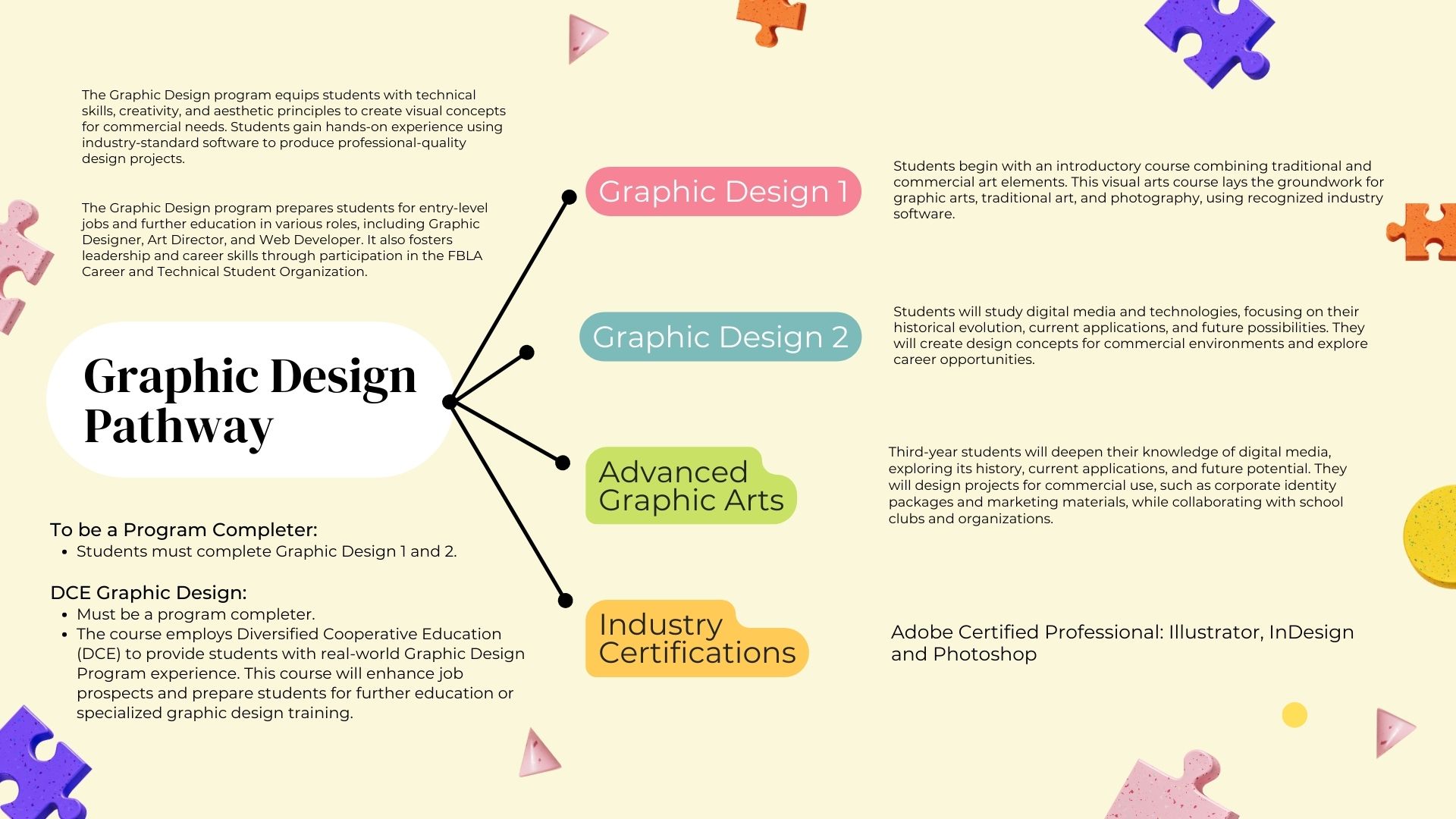
Check out Major Clarity to explore careers in the Graphic Design Pathway.
Semester A + Semester B courses from the same subject area = 1.0 credit
One Semester courses (indicated below) = 0.5 credit
- AS/A level courses may be eligible for college credit by examination
- University bound students may not take Personal Finance A & B
Graphic Design Pathway
The Graphic Design program equips students with technical skills, creativity, and aesthetic principles to create visual concepts for commercial needs. Students gain hands-on experience using industry-standard software to produce professional-quality design projects.
The Graphic Design program prepares students for entry-level jobs and further education in various roles, including Graphic Designer, Art Director, and Web Developer. It also fosters leadership and career skills through participation in the FBLA Career and Technical Student Organization.
To be a Program Completer:
- Students must complete Graphic Design 1 and 2.
DCE Graphic Design:
- Must be a program completer.
- The course employs Diversified Cooperative Education (DCE) to provide students with real-world Graphic Design Program experience. This course will enhance job prospects and prepare students for further education or specialized graphic design training.
| Graphic Design 1 | Students begin with an introductory course combining traditional and commercial art elements. This visual arts course lays the groundwork for graphic arts, traditional art, and photography, using recognized industry software. |
|---|---|
| Graphic Design 2 | Students will study digital media and technologies, focusing on their historical evolution, current applications, and future possibilities. They will create design concepts for commercial environments and explore career opportunities. |
| Advanced Graphic Arts | Third-year students will deepen their knowledge of digital media, exploring its history, current applications, and future potential. They will design projects for commercial use, such as corporate identity packages and marketing materials, while collaborating with school clubs and organizations. |
| Industry Certifications | Adobe Certified Professional: Illustrator, InDesign and Photoshop |
